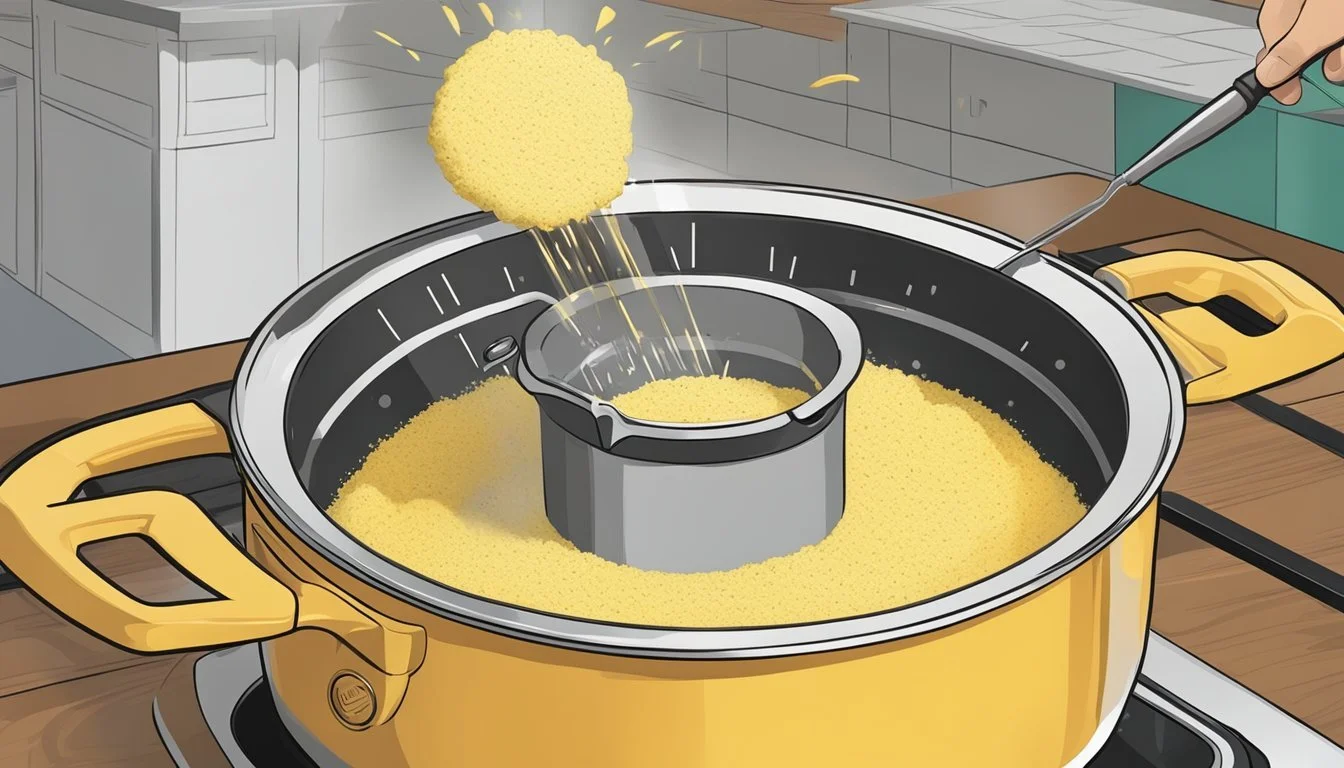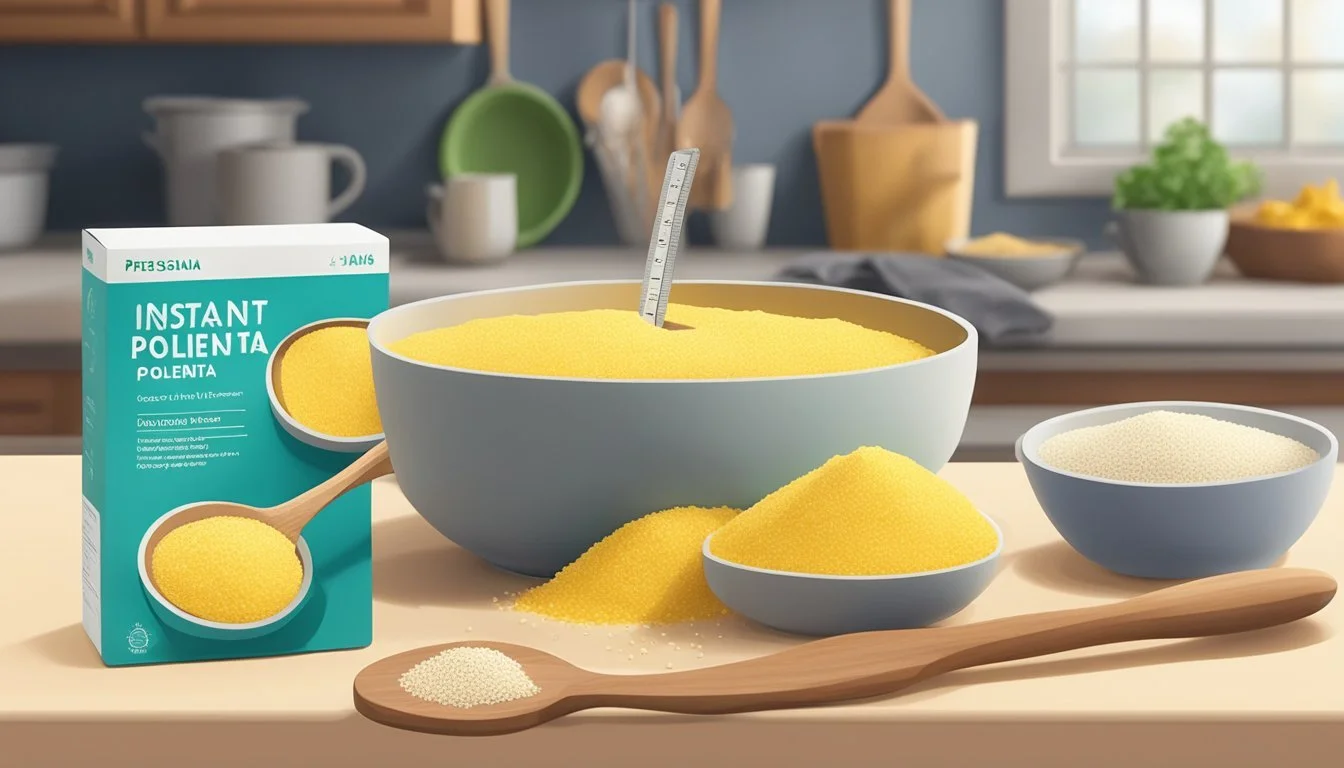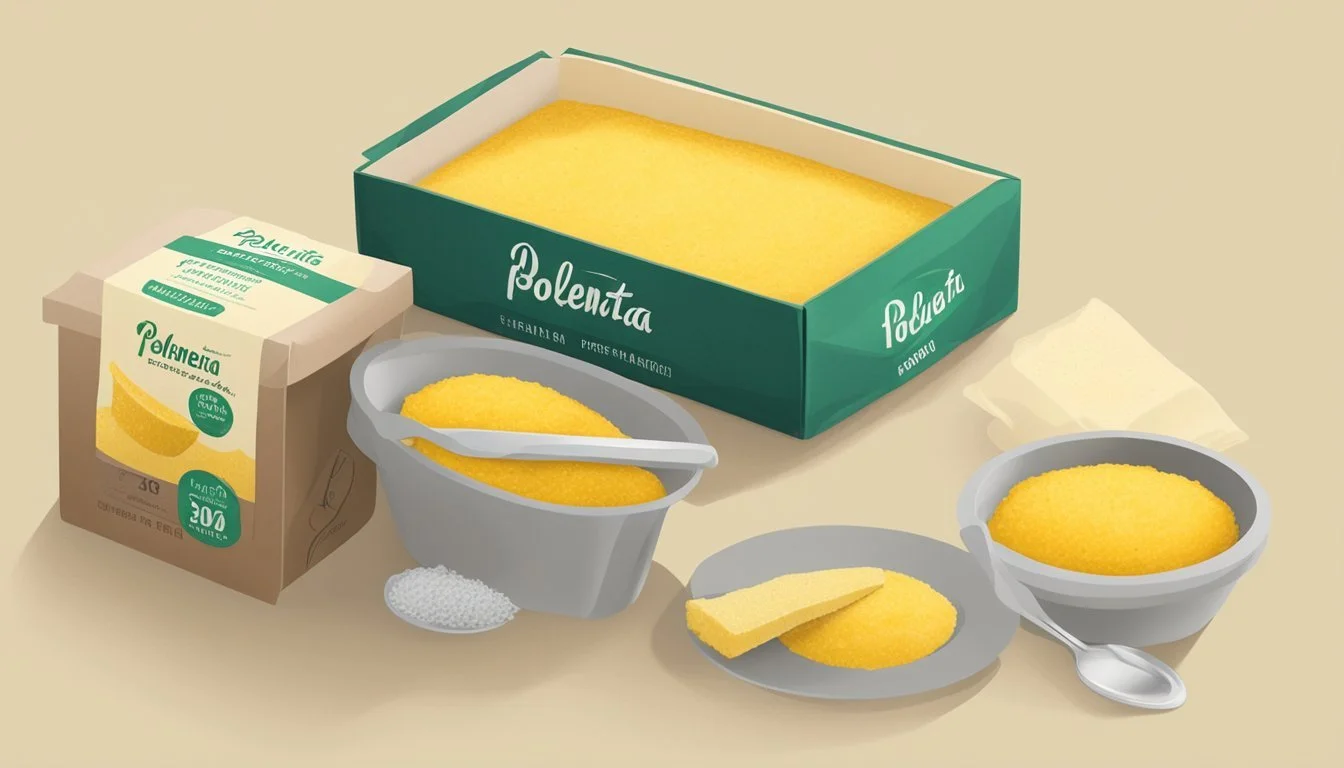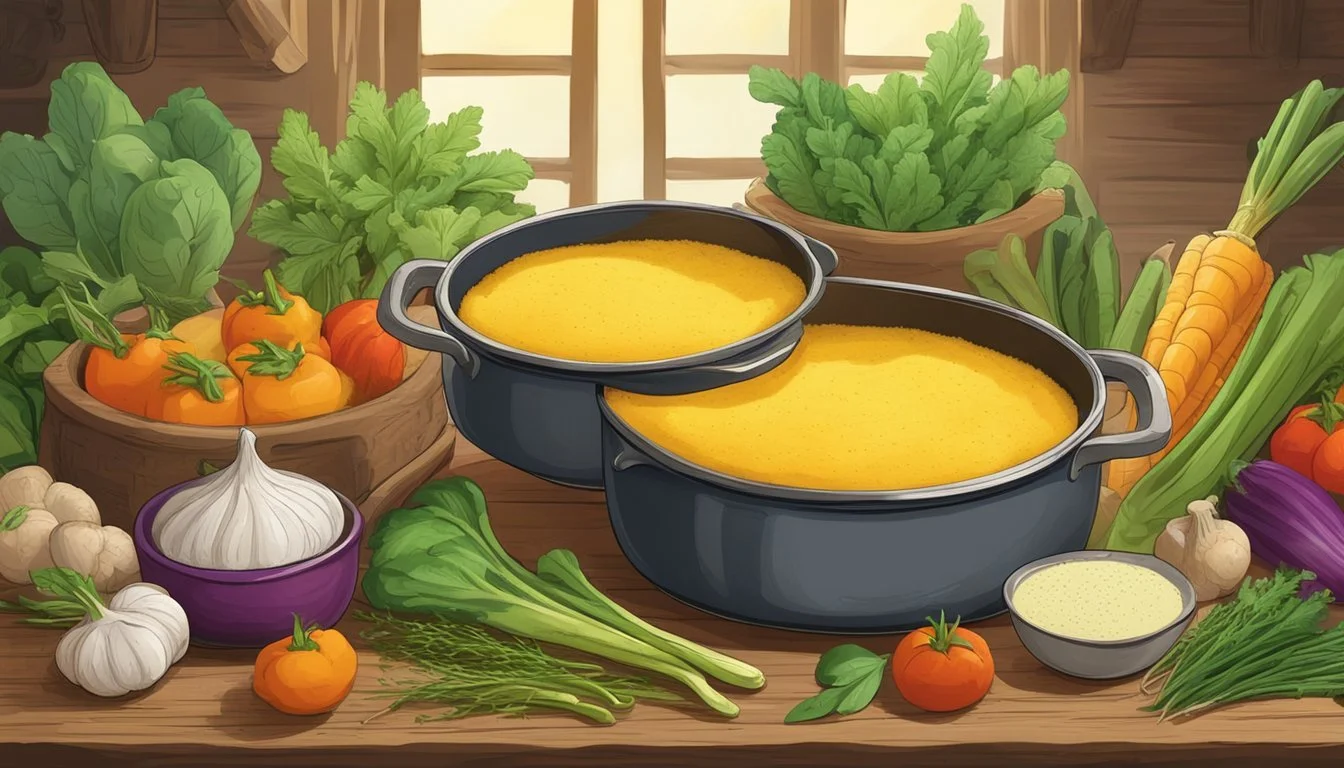How Long Does Instant Polenta Last?
Shelf Life and Storage Tips
Polenta, a traditional Italian dish made from ground cornmeal, has gained popularity for its versatility and comfort-food appeal. Instant polenta (how long does instant polenta last?) offers a more convenient alternative to the traditional cooking method, simplifying the preparation process by requiring just a quick addition of boiling water. Despite its convenience, the shelf life of instant polenta is a matter of concern for many, making proper storage an essential aspect of maintaining its quality.
Once an unopened package of instant polenta is stored in a cool, dry place, it can last for approximately two months. However, once opened and cooked, the lifespan of polenta is reduced and proper refrigeration becomes necessary. Cooked polenta should be kept in an airtight container in the refrigerator, where it will remain good for about 2 to 5 days. Knowing how to store this versatile grain properly can ensure that it retains its flavor and texture, and remains safe for consumption.
What Is Polenta?
Polenta is a traditional Italian dish that has found its place as a staple in many diets around the world, appreciated for its versatility and corn-rich flavor.
Background and History
Polenta originated in northern Italy as a peasant food but has since spread in popularity across various cuisines globally. Its history dates back to the Roman times when it was made from other starchy grains before the introduction of corn from the Americas. Polenta is not just a dish; it represents a culinary tradition integral to Italian culture.
Composition and Varieties
The primary ingredient in polenta is cornmeal, which is ground corn. The granularity of the cornmeal can vary, which affects both texture and cooking time. There are mainly two varieties of polenta: traditional polenta, which requires longer cooking and constant stirring, and instant polenta, that cooks more quickly due to finer milling.
Nutritional Profile
Polenta offers a hearty source of carbohydrates with a modest amount of protein and dietary fiber. Its composition makes it a filling addition to meals:
Carbohydrates: It is a good energy source due to its high carbohydrate content.
Protein: Polenta contains a small amount of protein.
Fiber: The dietary fiber in polenta can aid in digestion.
Polenta can be part of a balanced diet and is especially appreciated for its gluten-free nature, making it suitable for those with gluten sensitivities.
Instant Polenta: An Overview
This section explores instant polenta, from its definition and cooking method to the distinctions between its traditional counterpart.
Defining Instant Polenta
Instant polenta is a type of cornmeal specifically processed for quick cooking. Unlike traditional polenta, which may require a considerable amount of stirring and cooking time, instant polenta is pre-cooked and dried, hence it can be prepared in significantly less time. Its granules are fine and designed to absorb water or other liquids rapidly, allowing for an efficient and consistent texture once cooked.
Cooking and Preparation
The preparation of instant polenta involves combining the fine-ground polenta with a liquid, usually water or milk, in a specific ratio that typically ranges from 4:1 to 5:1, liquid to polenta. A swift cooking process ensues, often taking about 3 to 5 minutes, where one must stir continuously to prevent lumps and achieve the desired creamy texture. The end product should have a soft and palatable flavor, lending itself to various recipes that call for a firm structure once cooled and set.
Instant vs. Traditional Polenta
When comparing instant polenta to traditional polenta, the key differences lie in the texture and cooking time. Traditional polenta is usually made with coarsely ground cornmeal, requiring a longer cooking period, averaging 40 to 50 minutes, to soften the grains and develop a full flavor. Instant polenta, which utilizes fine-ground polenta, cuts down on the cooking time dramatically, answering the needs of those seeking a quicker alternative without compromising substantially on flavor or texture.
Storage Fundamentals
The proper storage of instant polenta is essential for maintaining its quality and extending its shelf life. When stored correctly, polenta can remain a versatile and dependable staple in any kitchen.
Packaging and Initial Storage
For uncooked instant polenta, storage should begin with placing it in an airtight container to protect it from moisture and pests. The container should then be kept in a pantry or any cool, dry place that maintains a consistent temperature range between 50°F and 70°F. This initial step ensures that the polenta's texture and flavor are preserved.
Shelf Life Details
Unopened instant polenta packages generally retain quality for around 1 to 2 years when properly stored. Upon opening, one should ensure the package is resealed tightly after each use to extend shelf life. If moisture is evident or the polenta has an off smell, this may indicate spoilage and the product should be discarded.
Refrigeration and Freezing Options
Leftover cooked polenta can be kept in the refrigerator for 5 to 7 days. It’s recommended to store it in a covered container or wrap it securely with plastic wrap to prevent it from drying out. While freezing is an option for extending the life of cooked polenta, texture changes upon thawing might make it less suitable for some recipes. However, it can still be utilized in dishes where polenta is blended into the preparation. Uncooked polenta should be kept in the pantry and not frozen, as freezing might affect its cooking properties.
Maintaining Quality and Safety
When it comes to instant polenta, it's essential to identify signs of spoilage and adhere to food safety practices to ensure the product remains safe for consumption and maintains its quality.
Spotting Spoilage
One can spot spoilage in instant polenta through certain telltale signs. If the polenta develops a rancid smell, it is an indication that it has gone bad. Other signs include the presence of mold, color changes, or any mold growth on the surface. These indicators suggest that the polenta should not be eaten and must be discarded.
Food Safety Practices
Food safety practices are paramount when handling instant polenta. To prevent the growth of bacteria and ensure safety, it should be stored at temperatures below 70°F (21°C) and in a cool, dry place. Once cooked, polenta must be refrigerated within two hours of cooking. It's best to use an airtight container for storage and to consume the polenta within 5-7 days to avoid potential spoilage. Always look for any signs of spoilage before use as a safety precaution.
Culinary Uses of Polenta
In the culinary world, polenta serves as both a staple ingredient in many recipes and a versatile side dish that complements a variety of accompaniments. Its role in enhancing flavor and texture is invaluable in both savory and sweet applications.
Polenta in Recipes
Polenta is a canvas for both traditional and innovative dishes. One might use it to create creamy porridge-like polenta, ideal for breakfast or as a comforting food when enriched with butter or cheese. In contrast, it can also be cooled and solidified, then sliced and grilled or baked as a hearty base for robust toppings.
Savory Recipes: Polenta pairs excellently with meat sauces and stews, providing a soft texture that absorbs flavors well.
Sweet Versions: Sweetened polenta can be utilized in desserts, often with fruit or sweet sauces.
Cooking Methods: Depending on the recipe, polenta may be stir-cooked on the stove, baked, or fried after setting.
Common Accompaniments
As a side dish, polenta’s subtle corn flavor and soft texture make it an excellent counterpart to a wide range of accompaniments. It excels when coupled with ingredients that introduce contrasting textures or rich flavors.
Meats: It is commonly served with braised meats (What wine goes well with braised meats?) that bring succulence and depth, such as short ribs or ossobuco.
Vegetarian Options: Grilled vegetables or mushroom ragout evidence the versatility of polenta as a base for plant-based dishes.
Seasonings and Fats: Polenta's flavor is often enhanced with seasonings like garlic, rosemary, or black pepper, and fats such as olive oil or butter.
Creamy Consistency: To achieve a luxurious texture, cooks may fold cream, mascarpone, or gorgonzola into the soft polenta before serving.
Reheating and Repurposing
Properly reheated polenta can retain its delightful texture and flavor, while leftover polenta opens up a realm of culinary creativity, transforming into entirely new dishes.
Reheating Cooked Polenta
When it comes to reheating polenta, the key is to restore its original creamy texture without drying it out. One can reheat polenta in a few different methods:
Microwave: For a quick method, one should slice the polenta and place it in a dish with a few tablespoons of water or broth. Covering it with a lid, one can microwave it on medium power, checking every 30 seconds until it's thoroughly warmed.
Oven: For a larger quantity, polenta can be placed in an oven-safe dish, dotted with butter or drizzled with a bit of cream, and covered with foil. It should be baked at a moderate temperature, around 350°F, until it's heated through, which typically takes about 15 to 20 minutes.
Stove: They might prefer to gently heat it in a saucepan over a low flame, stirring frequently and adding a splash of milk or water to maintain moisture.
Fry or Grill: Leftover polenta can be cut into slices or cakes and fried until it has a golden crust. Alternatively, one can opt to grill the slices for a smoky flavor.
Creative Uses for Leftovers
Leftover polenta is versatile and can be repurposed into several dishes:
Polenta Cakes: They can cut cooled and solidified polenta into cakes, which can be either baked or fried to create a crispy exterior. These can be served with cheese, sauce, or as a bed for meats and vegetables.
Baked Dishes: One could layer slices of polenta with cheese and sauce in a baking dish, creating a polenta lasagna, or use it as a crust for savory tarts.
Grilled Delights: Grilled polenta provides a unique twist and can be topped with an assortment of toppings like cheese, herbs, and tomatoes for a quick appetizer or side dish.
Each reheating method has its own benefits, and repurposing it into creative dishes can offer a delightful culinary experience.
Maximizing Flavor and Texture
In creating the perfect bowl of instant polenta, one should focus on attaining the ideal consistency and maximizing the dish’s creamy potential. The journey to exceptional polenta lies in the subtleties of preparation techniques and ingredient choices.
Adjusting Consistency
Instant polenta offers a convenient shortcut to a satisfying meal, but achieving the preferred consistency requires careful attention to the liquid-to-polenta ratio. For firmer polenta that holds its shape, one usually uses less liquid, while a softer, creamier dish will need more. The standard ratio is typically 4 parts liquid to 1 part polenta, but this can be adjusted slightly to reach the desired thickness.
Firmer Polenta: Use approximately 3 parts liquid to 1 part polenta.
Softer Polenta: Use up to 5 parts liquid to 1 part polenta.
Tips for Creamy Polenta
To elevate instant polenta to a lusciously creamy texture akin to the traditional version, one can incorporate various fats and proper seasoning. Stirring in butter or olive oil at the end of cooking can transform the polenta from simply good to decadently creamy.
Fat: Add a tablespoon or two of butter or olive oil after cooking.
Dairy: For a richer taste, replace water with milk or a combination of milk and broth.
Whisking: To avoid lumps, effectively whisk the polenta as you incorporate it into the boiling liquid.
Seasonings: Generous seasoning, particularly salt, is key to intensify the flavor profile.
One should not overlook the importance of the cooking process itself. A consistent and gentle simmer will aid in achieving the right texture without burning or sticking to the pot. By following these approaches, one can ensure a flavorful and texturally pleasing bowl of instant polenta.
Troubleshooting Common Issues
When preparing instant polenta, it's crucial to hew closely to the recipe and recommended practices. Despite this, two common issues might arise: the formation of lumps and the undesired drying out of the polenta. The following subsections provide guidance on how to address these problems effectively.
Addressing Lumps and Separation
Lumps can form in polenta when it's not whisked continuously while being poured into boiling water. To resolve this issue, one must stir vigorously and constantly to break up the lumps as they appear. If the lumps persist, passing the polenta through a fine-mesh sieve can help restore a smooth consistency. It is also important to ensure that the water is boiling and to pour the polenta in a steady stream to prevent separation.
Preventing Dryness and Hardening
Instant polenta can become dry and harden if not stored correctly. To maintain optimal moisture content, cooked polenta should be covered with a lid or cling film when resting to prevent exposure to air, which leads to drying out. If the polenta does become too solid, adding a little water or milk while reheating can help rehydrate it and bring back the creamy polenta texture. For uncooked polenta, it should be kept in a cool and dry place in an airtight container to protect it from moisture and other contaminants that can spoil its quality.
Polenta as a Dietary Consideration
Polenta, a versatile and nutritious grain dish, fits well within various dietary frameworks due to its inherent qualities. It serves as a beneficial source of carbs and can adapt to gluten-free and vegan diets.
Polenta in Gluten-Free and Vegan Diets
Gluten-Free: Polenta is naturally gluten-free, as it is made from ground cornmeal. This makes it a suitable and safe grain choice for individuals with celiac disease or gluten sensitivity. It provides a wholesome alternative to wheat-based grains and can be included as a dietary staple.
Dietary Fiber: Polenta contains dietary fiber, which is essential for good digestive health.
Vegan: As a plant-based product, polenta also aligns well with vegan diets. In its basic form, without additives such as cheese or cream, polenta can serve as a hearty base for a variety of plant-based meals.
Versatility: It can be topped with legumes, vegetables, or vegan sauces, enhancing its nutritional profile and keeping meals interesting.
Allergens and Intolerances
Polenta is typically free from common allergens, making it a friendly option for many individuals with food sensitivities. However, consumers should always check product labels for potential cross-contamination or added ingredients that might introduce allergens:
Cross-Contamination: Facilities that also process wheat, soy, nuts, or dairy could pose a risk, as traces of these allergens may inadvertently be present in polenta.
Additives: Additionally, pre-packaged or flavored polenta varieties might incorporate additives, so individuals should inspect ingredient lists to ensure the polenta aligns with their dietary needs.
Tips for Buying and Storing Polenta
When purchasing polenta, one should aim for freshness and consider storage practices that will extend its shelf life. Proper storage is critical in maintaining the quality and longevity of this versatile grain.
Selecting the Right Polenta
The first step in ensuring long-lasting polenta begins at purchase. Look for instant polenta, which is pre-cooked and dehydrated, providing convenience for quick preparation. One should opt for packages that are sealed well, with no signs of moisture or damage. Grind type is also a factor; instant polenta is typically made from finely ground cornmeal, which can last longer than its coarsely ground counterparts.
Read the labels: Check for packaging dates to choose the freshest option.
Inspect the packaging: Avoid polenta with damaged packages to prevent the premature introduction of moisture.
Storage Tips and Best Practices
Once brought home, polenta should be stored correctly to maximize its shelf life. Unopened packages of instant polenta can be kept in a cool, dry place away from any sources of moisture and heat. After opening, transferring polenta to an airtight container is crucial in preventing the absorption of moisture and odors.
Temperature: Keep polenta in a cool environment, ideally below 70°F (21°C).
Humidity: Store polenta away from damp areas to protect it from mold and spoilage.
Airtight containers: Use sealable containers to maintain freshness.












